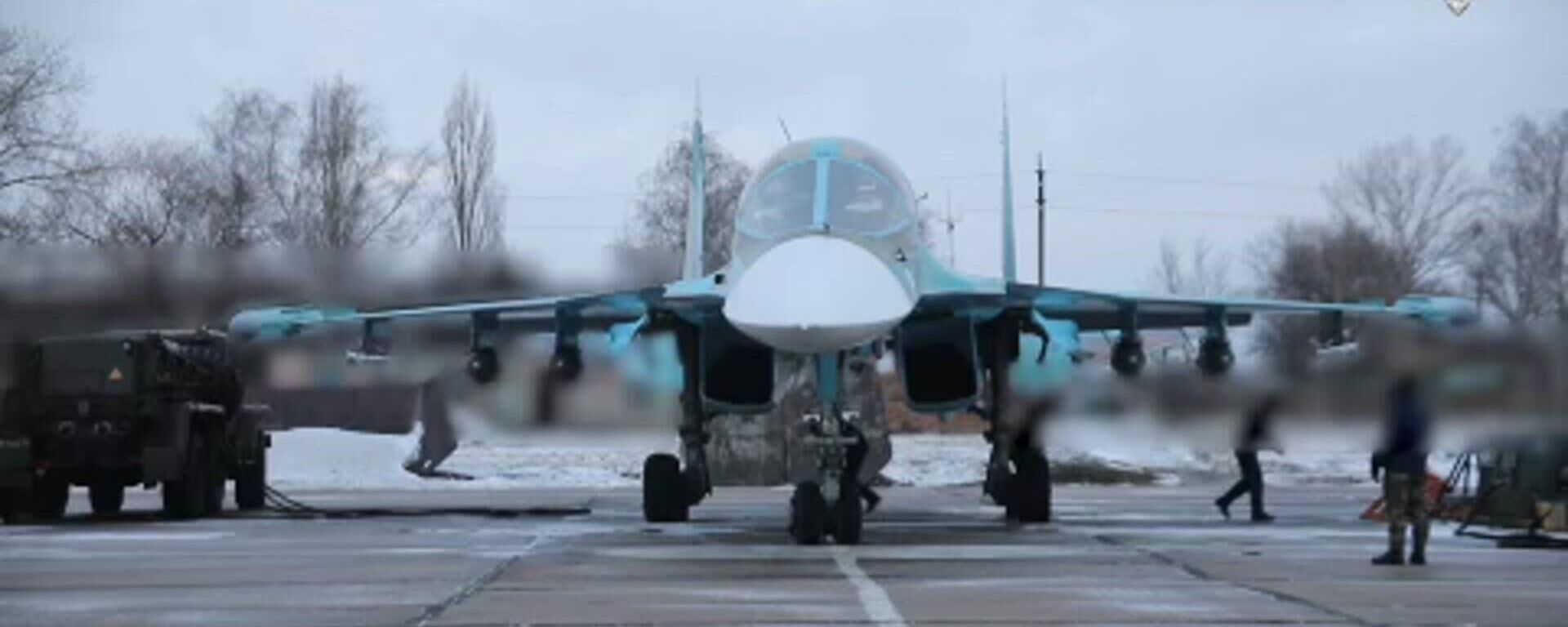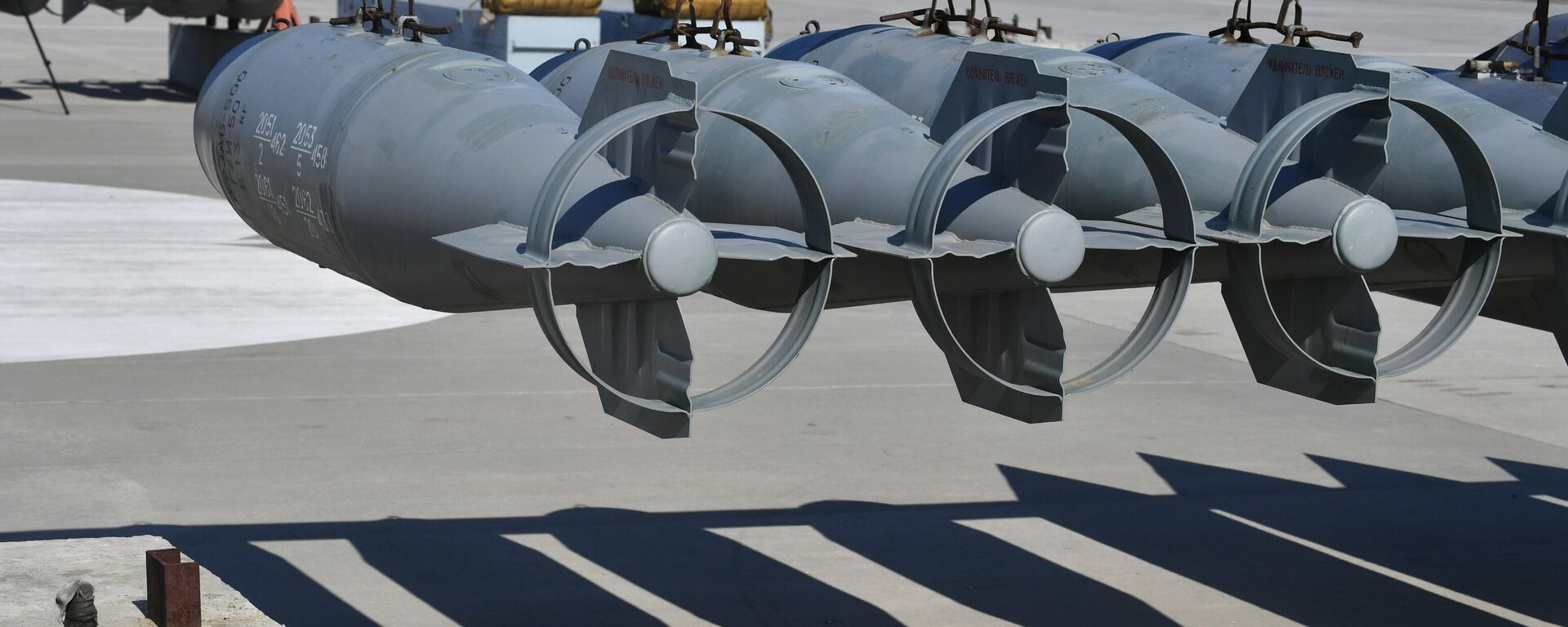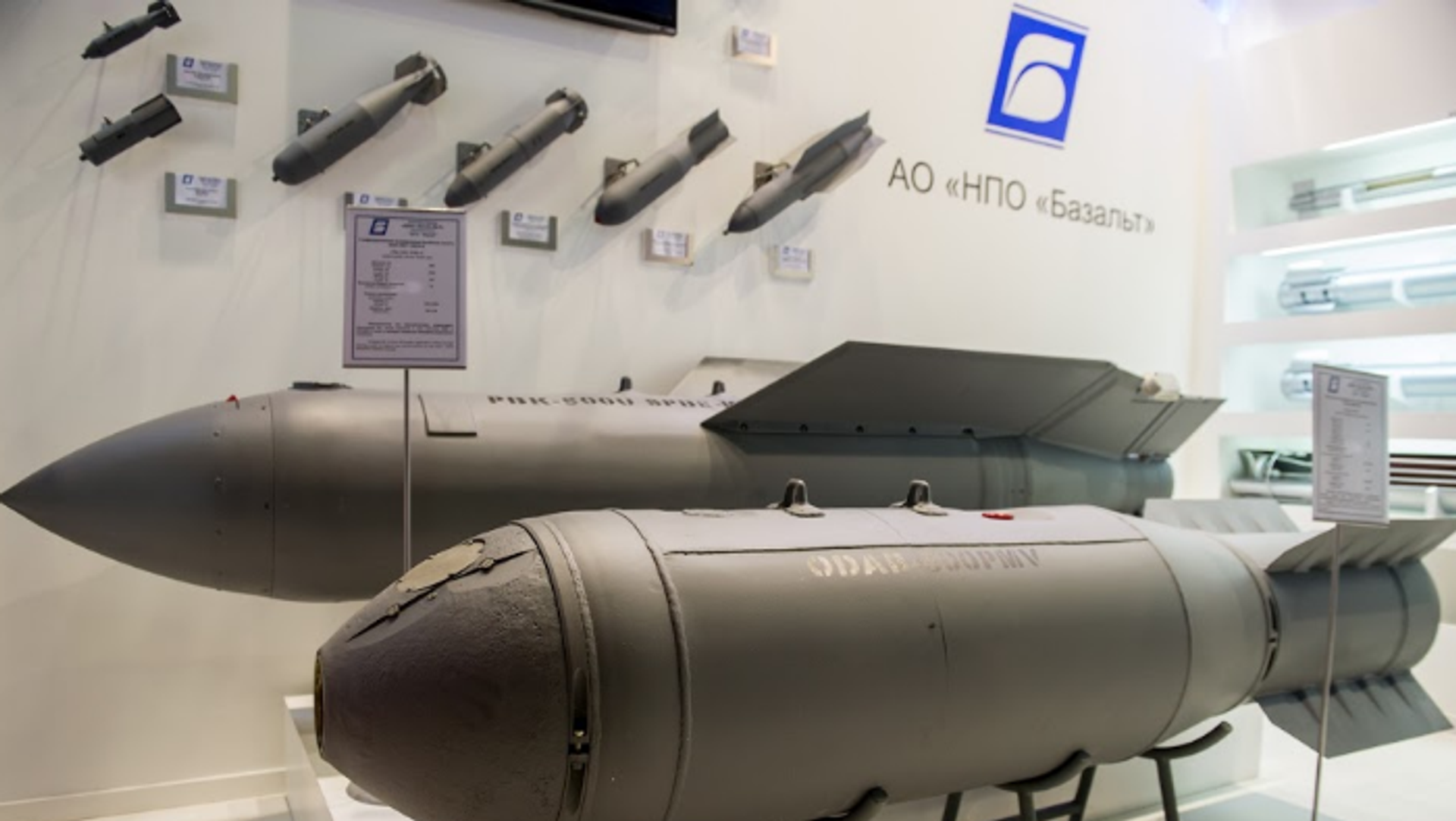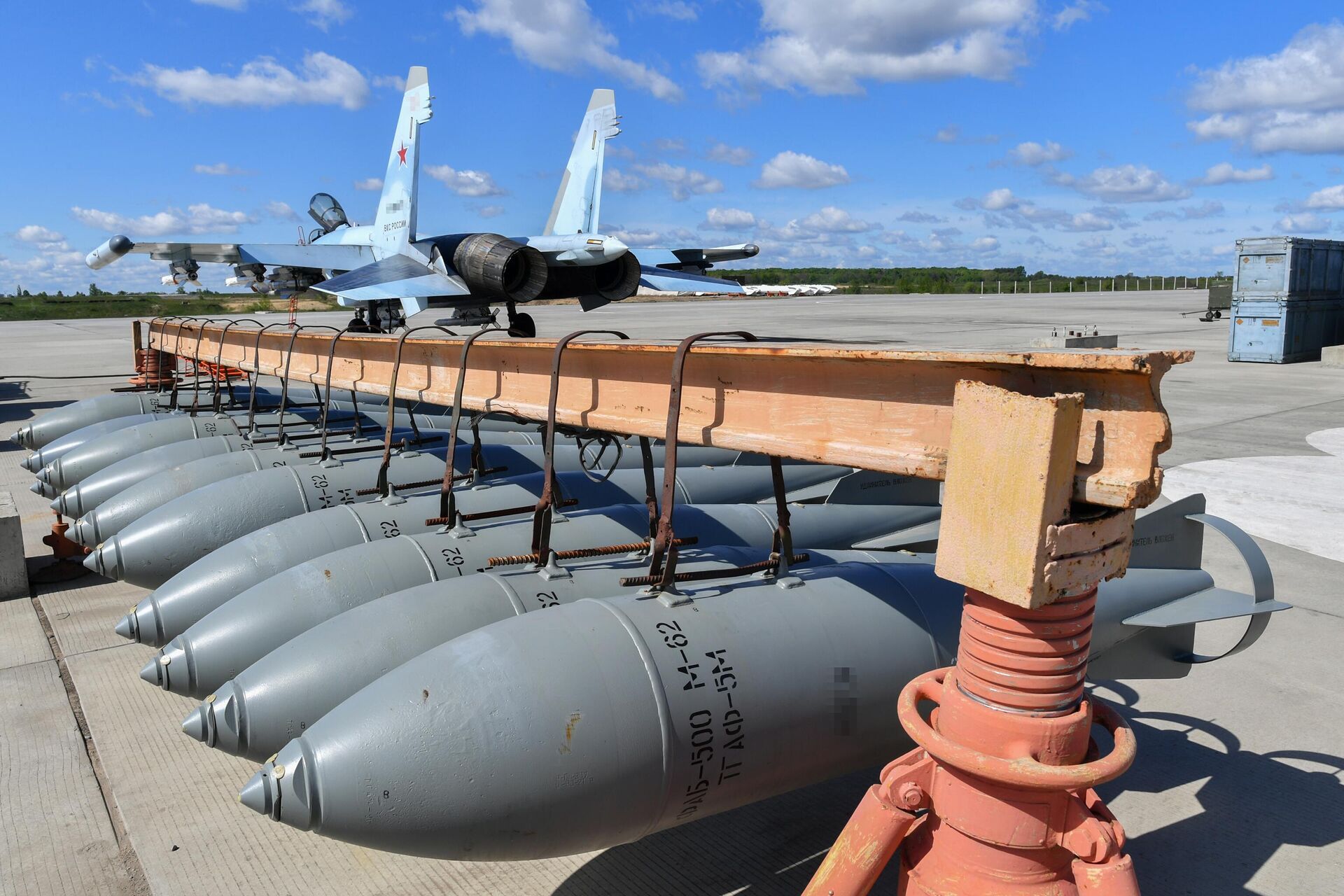https://sputnikglobe.com/20240111/drilling-through-enemy-lines-what-is-russias-new-glide-cluster-bomb-1116117603.html
Drilling Through Enemy Lines: What is Russia's New Glide Cluster Bomb?
Drilling Through Enemy Lines: What is Russia's New Glide Cluster Bomb?
Sputnik International
Serial production of the new Russian glide cluster bomb Drel is due to begin before the end of this year. What are the Drel’s characteristics and will the bomb be used in the Russian special operation zone? Sputnik explores.
2024-01-11T14:55+0000
2024-01-11T14:55+0000
2024-01-11T14:55+0000
russia
military
ukraine
special operation
glide bombs
russian armed forces
https://cdn1.img.sputnikglobe.com/img/07e8/01/0b/1116111568_0:0:700:395_1920x0_80_0_0_45f18f6fb98334843605d74638d777f5.png
"The Drel (Drill) bomb has already undergone all types of tests specified by the customer," the press service of the Russian state corporation Rostec – the country’s main weapons producer - has reported.The press service added that information about the bomb’s possible use in the Russian special military operation is classified.Сharacteristics According to open sources, the Drel’s dimensions and weight are 3.1 m (122 inches) and 540 kg (1,190 pounds), respectively.The maximum altitude from which the bomb can be dropped is 14 km (8.6 miles). Its range is 30 km (18.6 miles).Importantly, the Drel’s design allows a warplane carrying the munition to drop the bomb without entering the enemy’s air defense coverage zone. The Su-57 fifth-generation fighter jet and the Su-34 multirole fighter-bomber are expected to be armed with this weapon.CapabilitiesBased on the "fire and forget" principle, the Drel contains 15 sub-munitions and is designed to destroy various ground targets, including armored vehicles, artillery, air defenses, radar stations and control centers.Navigation is carried out with the help of the GLONASS satellite system and other guidance means.All by ItselfReferring to the "fire and forget" concept, Alexander Kochkin, executive director of the Tekhmash company, earlier told Sputnik that the Drel is capable of independently flying the required distance and hitting targets at the right moment.Russia's Arsenal of Glide BombsThe Drel’s upcoming serial production will add to Russia expanding its arsenal of high-precision glide bombs, which currently includes the UPAB-1500, the UPAB-500B, and the KAB-250LG, as well as the FAB-250, the FAB-500 and the FAB-1500, munitions the Russian army uses in the special operation.The 1,525 kg (3,362 pounds) UPAB-1500B is designed to obliterate well-protected ground targets, including command posts, while the 390 kg (859 pounds) PAB-500B effectively destroys fixed ground and surface objects such as highway and railway bridges, military-industrial facilities, warships and transport vessels, according to the Russian state arms exporter Rosoboronexport.The maximum altitudes for dropping the UPAB-1500Bs and the PAB-500B are 15 km (9.3 miles) and 14 km (8.6 miles), respectively.The 256 kg (564 pounds) KAB-250LG, equipped with a laser homing head, is capable of wiping out railway junctions, military-industrial facilities, ships, warehouses and airfield structures at a maximum altitude of 10 km (6.2 miles).FAB-1500MLast year, the sophisticated FAB-1500M high-explosive glide bomb entered into service in the Russian army.The 1,500 kg (3,300 pounds) high-precision munition, fitted with a universal gliding and correction module (UGCM) and typically carried by Su-34 fighter-bombers, was even mentioned by the Forbes magazine, which referred to the bomb as "giant."'Like Hell's Gate' Russian experts have been meanwhile quoted as saying that the use of the above-mentioned bombs equipped with the UMPC modules allows Russian forces "to achieve the most effective destruction" of enemy positions in the special operation zone.The experts believe that such bombs, not least the FAB-1500M, contribute greatly to the destruction of crucial Ukrainian military infrastructure located near the front line. What’s more, the commentators stressed, such munitions are hard to intercept with anti-aircraft systems.In the similar vein, the New York Times cited unnamed Ukrainian soldiers as saying that since March, they had suffered "the additional devastating power" of Russian glide bombs, which the newspaper described as "half-ton explosives unleashed from planes that smash through underground bunkers."
https://sputnikglobe.com/20240109/watch-russian-su-34-jet-strike-ukrainian-stronghold-in-northern-dpr-with-500-kg-bombs-1116060861.html
https://sputnikglobe.com/20230828/no-antidote-ukrainian-troops-terrified-of-russias-unstoppable-precision-gliding-bombs-1112948316.html
russia
ukraine
Sputnik International
feedback@sputniknews.com
+74956456601
MIA „Rossiya Segodnya“
2024
Oleg Burunov
https://cdn1.img.sputnikglobe.com/img/07e4/09/0b/1080424846_0:0:2048:2048_100x100_80_0_0_3d7b461f8a98586fa3fe739930816aea.jpg
Oleg Burunov
https://cdn1.img.sputnikglobe.com/img/07e4/09/0b/1080424846_0:0:2048:2048_100x100_80_0_0_3d7b461f8a98586fa3fe739930816aea.jpg
News
en_EN
Sputnik International
feedback@sputniknews.com
+74956456601
MIA „Rossiya Segodnya“
Sputnik International
feedback@sputniknews.com
+74956456601
MIA „Rossiya Segodnya“
Oleg Burunov
https://cdn1.img.sputnikglobe.com/img/07e4/09/0b/1080424846_0:0:2048:2048_100x100_80_0_0_3d7b461f8a98586fa3fe739930816aea.jpg
russian special military operation, use of russian glide bombs in the special operatin zone, serial production of a new russian glide cluster bomb, start of serial production of russia's new drel glide cluster bomb
russian special military operation, use of russian glide bombs in the special operatin zone, serial production of a new russian glide cluster bomb, start of serial production of russia's new drel glide cluster bomb
Drilling Through Enemy Lines: What is Russia's New Glide Cluster Bomb?
Serial production of the new Russian glide cluster bomb Drel is due to begin before the end of this year. What are the Drel’s characteristics and will the bomb be used in the Russian special operation? Sputnik explores.
"The Drel (Drill) bomb has already undergone all types of tests specified by the customer," the press service of the Russian state corporation Rostec – the country’s main weapons producer - has reported. The press service added that information about the bomb’s possible use in the Russian
special military operation is classified.
Generally speaking, a glide bomb, also known as a stand-off bomb, has flight control surfaces to provide it with a flatter, gliding flight path as compared to conventional bombs. A cluster bomb, or a cluster munition is a type of air-dropped or ground-launched explosive weapon that releases or ejects smaller sub-munitions.
According to open sources, the Drel’s dimensions and weight are 3.1 m (122 inches) and 540 kg (1,190 pounds), respectively.
The maximum altitude from which the bomb can be dropped is 14 km (8.6 miles). Its range is 30 km (18.6 miles).
Importantly, the Drel’s design allows a warplane carrying the munition to drop the bomb without entering the enemy’s air defense coverage zone.
The Su-57 fifth-generation fighter jet and the Su-34 multirole fighter-bomber are expected to be armed with this weapon.
Based on the "fire and forget" principle, the Drel contains 15 sub-munitions and is designed to destroy various ground targets, including armored vehicles, artillery, air defenses, radar stations and control centers.
Navigation is carried out with the help of the GLONASS satellite system and other guidance means.
Developers maintain that the bomb's design and technology make it highly unlikely for enemy radars to detect it.
Referring to the "fire and forget" concept, Alexander Kochkin, executive director of the Tekhmash company, earlier told Sputnik that the Drel is capable of independently flying the required distance and hitting targets at the right moment.
"Even if this sub-munition [of the Drill bomb] fails to detect a target, it will self-destroy shortly after and will not pose a danger to the local population after the cessation of hostilities," Kochkin emphasized.
Russia's Arsenal of Glide Bombs
The Drel’s upcoming serial production will add to Russia expanding its arsenal of high-precision glide bombs, which currently includes the UPAB-1500, the UPAB-500B, and the KAB-250LG, as well as the FAB-250, the FAB-500 and the FAB-1500, munitions the Russian army uses in the special operation.
The 1,525 kg (3,362 pounds) UPAB-1500B is designed to obliterate well-protected ground targets, including command posts, while the 390 kg (859 pounds) PAB-500B effectively destroys fixed ground and surface objects such as highway and railway bridges, military-industrial facilities, warships and transport vessels, according to the Russian state arms exporter Rosoboronexport.
The maximum altitudes for dropping the UPAB-1500Bs and the PAB-500B are 15 km (9.3 miles) and 14 km (8.6 miles), respectively.
The 256 kg (564 pounds) KAB-250LG, equipped with a laser homing head, is capable of wiping out railway junctions, military-industrial facilities, ships, warehouses and airfield structures at a maximum altitude of 10 km (6.2 miles).
Last year, the sophisticated FAB-1500M high-explosive glide bomb entered into service in the Russian army.
The 1,500 kg (3,300 pounds) high-precision munition, fitted with a universal gliding and correction module (UGCM) and typically carried by Su-34 fighter-bombers, was even mentioned by the Forbes magazine, which referred to the bomb as "giant."

9 January 2024, 04:04 GMT
According to the media outlet, "For comparison, Ukraine’s own glide-bombs—American-made Joint Direct Attack Munitions-Extended Range—weigh just 500 pounds [226 kg]."
Russian experts have been meanwhile quoted as saying that the use of the above-mentioned bombs equipped with the UMPC modules allows Russian forces "to achieve the most effective destruction" of enemy positions in
the special operation zone.
The experts believe that such bombs, not least the FAB-1500M, contribute greatly to the destruction of crucial Ukrainian military infrastructure located near the front line. What’s more, the commentators stressed, such munitions are hard to intercept with anti-aircraft systems.

28 August 2023, 19:13 GMT
In the similar vein, the New York Times cited unnamed Ukrainian soldiers as saying that since March, they had suffered "the additional devastating power" of Russian glide bombs, which the newspaper described as "half-ton explosives unleashed from planes that smash through underground bunkers."
"They would send them [the glide bombs] two by two by two, eight in an hour. It sounds like a jet coming down on you, like hell’s gate," the soldier, who was only identified by his call sign, the Kit, said.







